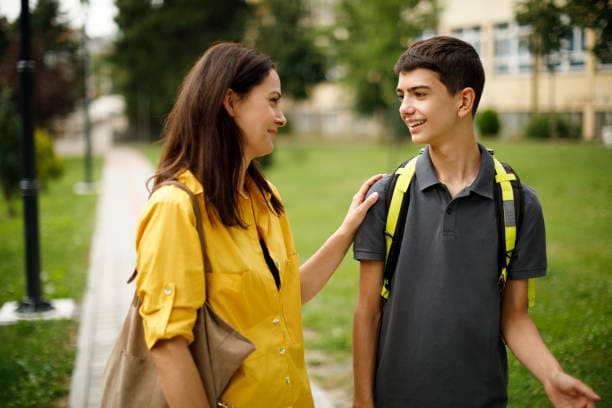3 Ways to Make Learning Relevant to Students

3 Ways to Make Learning Relevant to Students
Self-Determination Theory, which may be the mostly widely known theory on human motivation, was originally developed by professors Edward Deci and Richard Ryan and highlights three key elements critical for creating the conditions that help support everyone, including students, to motivate themselves—autonomy, competence, and relatedness. Many researchers also either include “relevance” within the “autonomy” category or explicitly add it as a fourth criteria.
The French word “relevant” originally meant “helpful,” and that’s what relevance means today in the context of intrinsic motivation. Do students see what they are being taught as useful to them in their present lives, and/or will it help them achieve their future goals? In addition, the word “relevance” can apply to topics or activities of “interest” to them, even if they may not necessarily be considered “helpful” or “useful.” For example, I found an article I recently read about door-to-door salespeople “interesting,” but nothing in it is particularly “useful” to me.
Personal relevance has been found to be a “particularly important” predictor of student engagement, especially for students who might feel less confident in their academic skills.
Unfortunately, according to the very limited data available, about half of students don’t feel that what they are learning in class right now is very relevant to what they do and will be doing outside of school. A survey of educators found that they felt that students not seeing relevance in coursework was one of the biggest motivational challenges they faced as teachers in the classroom.
If studies are concluding that it’s important for students to feel that school content is relevant to their lives; if many students might be saying that they don’t feel like it is; and if teachers are agreeing that students don’t appear to see what is happening in school as relevant, then perhaps it would be worth us reflecting on what we’ve been doing in the classroom and consider making some changes …
“Self-generation” is the term used to describe having students themselves identify how what they are learning can be relevant to their lives and goals.
There are at least two different ways to approach this kind of “self-generation.” One is being more direct in asking students to connect a specific lesson to their lives, and the other is having them choose any school content and describe how it is relevant to them.
An example of the first strategy was demonstrated by researchers who had students write a paragraph after a lesson explaining how they thought what they had learned would be useful to their lives. Writing one to eight of these during a semester led to positive learning gains, especially for those students who had previously been “low performers.”
This successful experiment prompted the University of Pennsylvania’s Character Lab (co-founded by Angela Duckworth, and EdWeek blogger) to create a specific “Build Connections” lesson using the second form of “self-generation”: having students consider a variety of topics they had learned about in school and making a connection to one or more of them. In the lesson and materials, including scaffolded student forms, that are freely available to teachers and students, students make one list of their interests and goals, then right next to it a list of topics they have learned about in class. They are then asked to make lines connecting as many of the two different lists as possible. Finally, they choose one from each column and explain in a short paragraph how they are connected.
2. “Direct communication” from teacher to student about connections
As opposed to students “self-generating” how class content is connected to their lives, “direct communication” simply means teachers explaining how it’s relevant. Some researchers have found that, though this method might be effective with students who perceive themselves as well-skilled academically, it may actually be de-motivating for others for various reasons. Some contributing factors could be because it may be viewed as a condescending message and/or they may want to reassert autonomy.
Other research, however, suggests that teachers pointing out connections is better than not discussing them at all, especially if those connections are more near term (the math we’re learning will help you figure out how to get the best car loan) than far term (the math we’re learning will help you purchase a house).
3. Engage with problems in the community
Students participating in an active role improving their communities—for example, through problem-based learning activities—can increase motivation by connecting to “relevance,” and studies have shown that teenage “activists” tend to have better academic performance and better long-term financial outcomes than those who are not involved in these types of activities.
Another way of approaching this idea is having the entire class choose one community problem to focus on.
The primary process I’ve used for these kinds of nonpartisan classwide projects is to first have students in the class interview each other, and family and community members, to ask what community problems concern them the most. Students report back, and then we make a list of the top priorities. Next, small groups turn these typically big “problems’’ that made the list, like crime, lack of jobs, and immigration, into small actionable “issues” that are specific and achievable in a short time. For example, the problem of “lack of jobs” can be turned into “asking our City Councilperson to assign a staff person to work with us on developing a summer jobs program for youth.” Finally, students decide to take action on one of these issues.
There are many other options for making lessons more “relevant” to students (for example, playing learning games is a common and easy additional strategy). It’s important to remember, however, that creating the classroom conditions in which students can motivate themselves is more of a deliberate mindset. Without it, students will likely see it as just the words without the music.



